The evolution of memory - from stone to electronic
The topic of information storage was relevant at all times - from the dawn of human civilization to the present day. Jeremy Cook, who publishes his articles on the EETimes website, offers his author’s view of the history of storage.
In continuation of the topic of the evolution of digital memory, I prepared something like a slide show illustrating this progress. A full review of the history of memory is a tedious task, so I chose a list of what I consider to be the main one. I invite everyone to express their opinion on the selection in the comments.
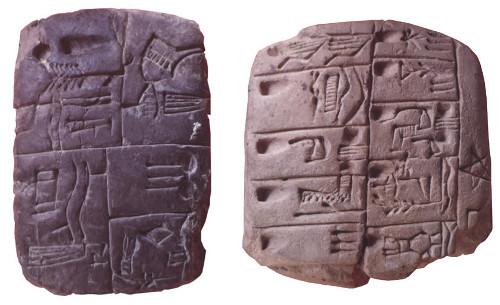
Source: University of Chicago
Not yet electronic or even mechanical, writing itself was an incredible discovery. It allowed not only to communicate to people in different places, but also to transfer knowledge from generation to generation. According to research at the University of Chicago , writing appeared around 3,500 BC. and this event was the "beginning of the information revolution." In my opinion, better not tell.
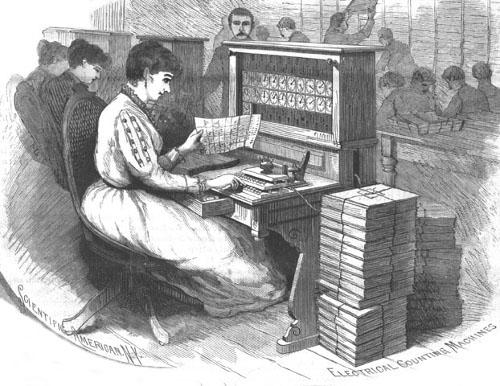
Illustration in Scientific American, August 30, 1890. Source: Wikipedia
Punch cards have loudly declared themselves at the 1890 US census; the machine, invented by Herman Hollerith , processed its results over the course of a year — it would take people 10 times longer. The idea for the device prompted conductors in trains, composted passenger tickets; French weaver Joseph-Marie Jacquard, who used punched tape to control the weaving process, also had a great influence.
')
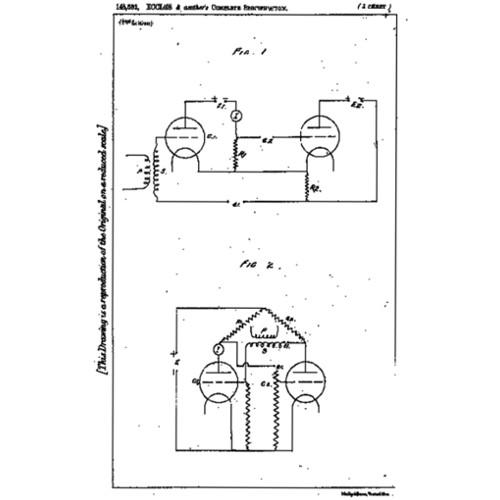
Scheme of the trigger from the patent Eccles and Jordan, 1918 Source: Wikipedia
The trigger, invented in 1918, gives us a hint how modern computer memory works. These old-fashioned bulky devices that can save and change their state, depending on an external electrical signal, are not fundamentally as far from how computers work now.
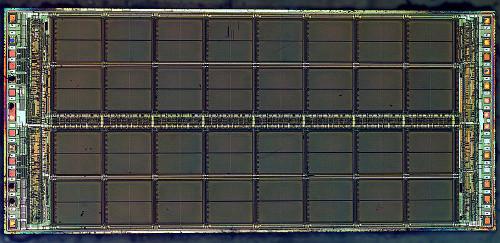
MT4C1024 is an integrated DRAM module manufactured by Micron Technology. Source: Wikipedia
DRAM (Dynamic random access memory, Dynamic Random Access Memory), invented in 1966 (not to be confused with an ancient coin!), Used capacitors to store information. The charged capacitor was a unit, the discharged one was zero. The term “dynamic” mentioned in the name meant not a functional feature, but a property of capacitors to lose their charge over time, which caused the need for recharging.

Source: Royan / Wikipedia commons
SDRAM (Synchronous Dynamic Random Access Memory, Synchronous Dynamic Random Access Memory) had limited use back in the 70s, but it made itself widely known only in 1993. Previously, RAM changed its state as quickly as possible to receive synchronous data. However, DRAM used a computer clock to tune storage. This made it possible to split the data into separate banks for simultaneous execution of several operations with memory simultaneously.

Intel's first EPROM, 1971. Source: Wikipedia
Dov Froman developed erasable programmable read-only memory (EPROM, Erasable Programmable Read Only Memory) in 1971 at Intel. It is non-volatile, that is, the contents of the memory is not destroyed when power is lost. These chips are programmed using electric current, information is erased by irradiation with ultraviolet light.
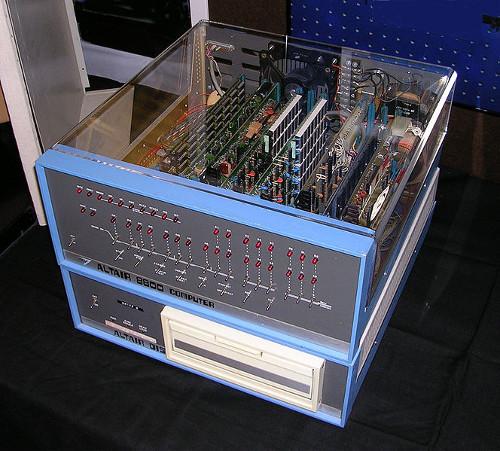
Source: Michael Holley / Wikipedia
Having been on the cover of Popular Electronics magazine in 1975, the Altair 8800 was the first computer for thousands of newly minted computer geeks. Although you can tell a lot of curious about this computer, in this article we are most interested in its 8-inch drive shown in the photo. According to rwebs.net, the disk could store 300,000 bytes. Now it’s strange for us to see the size of the memory without adding a mega- or gigabyte console, but at that time it was a decent amount. It is curious that you could also purchase a cassette interface if you did not like the drive.
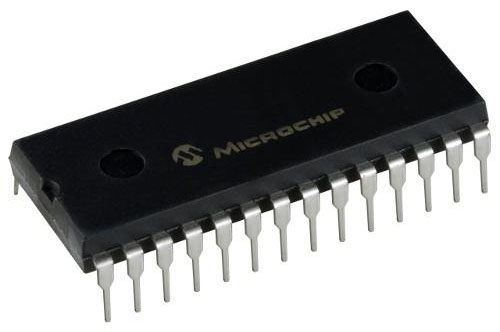
Source: Amit Bhawani
Electrically Erasable Programmable Read Only Memory (EPROM, Electrically Erasable Programmable Read Only Memory) appeared in 1978. Its advantage over EPROM is the ability to program and erase data during use. There was one significant limitation - in the number of reprogramming cycles. However, in modern chips, the number of read-write cycles has been significantly increased.
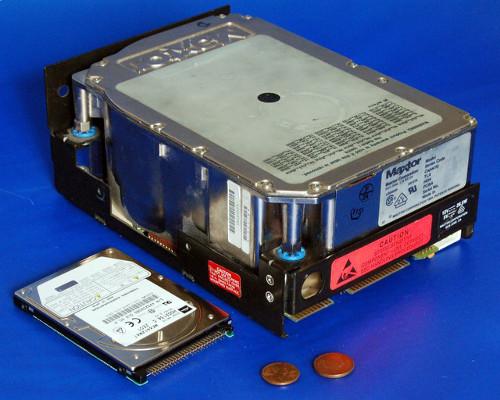
Source: Ian Wilson / Wikipedia
Seagate produced its first 5-inch hard drive in the 1980s. From now on, the memory components begin to resemble those that we have now, but there are also nuances. For example, in the same year, IBM released the first hard drive with a capacity of 1 GB - it weighed 550 kg.

Sony CDP-101 Player Brochure. Source: TechHive.com
Audio CD sales began in 1982. Initially, they were not intended for computers, but were a means of storing digital information, and by 1985 the first CD-ROM drives appeared. The CDs were ahead of their time — only in the early 90s did computers catch up with them in terms of the amount of stored multimedia information.
Despite their age, the CD is still, if not so widely, used to distribute data. 30 years is a huge time for everything digital.
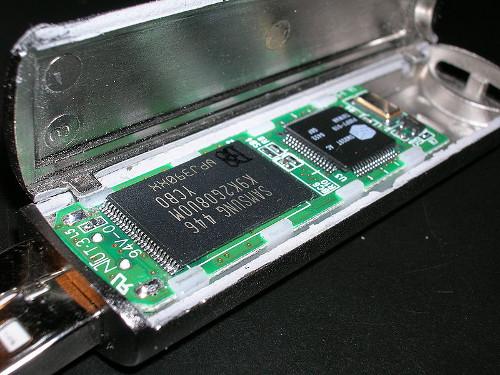
The chip on the left is flash memory, on the right is the controller. Source: Wikimedia Commons
Flash memory was invented in the 80s and presented to the public in 1988. Technically representing a type of EEPROM, flash memory significantly exceeds its predecessors in speed. Two varieties were developed based on the NAND and NOR logic gates, respectively. The technology is still in use today, one of the most common examples is Compact Flash memory cards.

Memory Corsair DDR-400 with radiators. Source: Martyn M aka Martyx / Wikipedia
The JDEC trade association certified DDR SDRAM (Double Data Rate Synchronous Dynamic Random Access Memory, Synchronized Dynamic Random Access Memory with Double Data Rate) in 2000. As the name implies, under certain conditions, this type of memory can provide double data rates compared to conventional SDRAM.
Following DDR SDRAM followed by DDR2, introduced in 2003 and providing about a twofold increase. Then DDR3 doubled it again in 2007. If someone is not satisfied with the 8-fold increase, DDR4 is not far off; in addition to doubling the speed, it has a lower operating voltage.
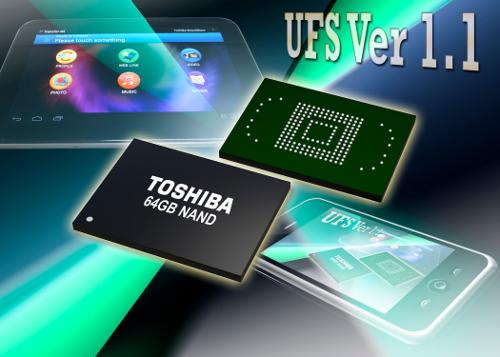
Source: Toshiba
JDEC published the UFS standard (Universal Flash Storage, Universal Flash Drive) in 2012 and updated it in September 2013. In addition to the power saving features, these chips will provide 300 Mbps duplex data throughput. It will be interesting to see how this type of memory will evolve in the future .
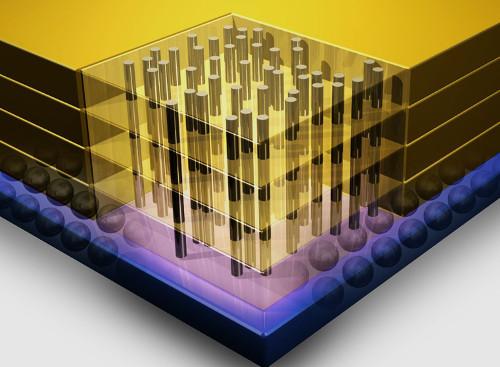
Source: Micron / TechWeekEurope.co.uk
In addition to DDR4 and UFS, another memory on our horizon is three-dimensional memory. Having exhausted the possibilities of flat chips, we are trying to squeeze the maximum out of the third dimension. This promising technology is described in the post Janine Love .
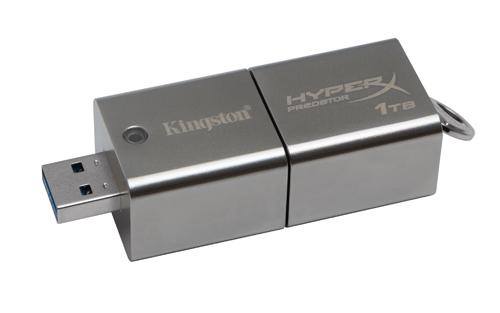
Source: HardwareZone
As I noted earlier , Kingston released a terabyte USB drive in 2013. I am still amazed at the density of data in this device the size of several centimeters.
It's amazing how far the progress in memory has gone. Do we continue to see such giant breakthroughs?
The original version of the post is published on the EETimes website.
In continuation of the topic of the evolution of digital memory, I prepared something like a slide show illustrating this progress. A full review of the history of memory is a tedious task, so I chose a list of what I consider to be the main one. I invite everyone to express their opinion on the selection in the comments.
Writing

Source: University of Chicago
Not yet electronic or even mechanical, writing itself was an incredible discovery. It allowed not only to communicate to people in different places, but also to transfer knowledge from generation to generation. According to research at the University of Chicago , writing appeared around 3,500 BC. and this event was the "beginning of the information revolution." In my opinion, better not tell.
Punch cards

Illustration in Scientific American, August 30, 1890. Source: Wikipedia
Punch cards have loudly declared themselves at the 1890 US census; the machine, invented by Herman Hollerith , processed its results over the course of a year — it would take people 10 times longer. The idea for the device prompted conductors in trains, composted passenger tickets; French weaver Joseph-Marie Jacquard, who used punched tape to control the weaving process, also had a great influence.
')
Trigger

Scheme of the trigger from the patent Eccles and Jordan, 1918 Source: Wikipedia
The trigger, invented in 1918, gives us a hint how modern computer memory works. These old-fashioned bulky devices that can save and change their state, depending on an external electrical signal, are not fundamentally as far from how computers work now.
DRAM

MT4C1024 is an integrated DRAM module manufactured by Micron Technology. Source: Wikipedia
DRAM (Dynamic random access memory, Dynamic Random Access Memory), invented in 1966 (not to be confused with an ancient coin!), Used capacitors to store information. The charged capacitor was a unit, the discharged one was zero. The term “dynamic” mentioned in the name meant not a functional feature, but a property of capacitors to lose their charge over time, which caused the need for recharging.
Sdram

Source: Royan / Wikipedia commons
SDRAM (Synchronous Dynamic Random Access Memory, Synchronous Dynamic Random Access Memory) had limited use back in the 70s, but it made itself widely known only in 1993. Previously, RAM changed its state as quickly as possible to receive synchronous data. However, DRAM used a computer clock to tune storage. This made it possible to split the data into separate banks for simultaneous execution of several operations with memory simultaneously.
Eprom

Intel's first EPROM, 1971. Source: Wikipedia
Dov Froman developed erasable programmable read-only memory (EPROM, Erasable Programmable Read Only Memory) in 1971 at Intel. It is non-volatile, that is, the contents of the memory is not destroyed when power is lost. These chips are programmed using electric current, information is erased by irradiation with ultraviolet light.
Drive

Source: Michael Holley / Wikipedia
Having been on the cover of Popular Electronics magazine in 1975, the Altair 8800 was the first computer for thousands of newly minted computer geeks. Although you can tell a lot of curious about this computer, in this article we are most interested in its 8-inch drive shown in the photo. According to rwebs.net, the disk could store 300,000 bytes. Now it’s strange for us to see the size of the memory without adding a mega- or gigabyte console, but at that time it was a decent amount. It is curious that you could also purchase a cassette interface if you did not like the drive.
Eeprom

Source: Amit Bhawani
Electrically Erasable Programmable Read Only Memory (EPROM, Electrically Erasable Programmable Read Only Memory) appeared in 1978. Its advantage over EPROM is the ability to program and erase data during use. There was one significant limitation - in the number of reprogramming cycles. However, in modern chips, the number of read-write cycles has been significantly increased.
HDD

Source: Ian Wilson / Wikipedia
Seagate produced its first 5-inch hard drive in the 1980s. From now on, the memory components begin to resemble those that we have now, but there are also nuances. For example, in the same year, IBM released the first hard drive with a capacity of 1 GB - it weighed 550 kg.
Audio CD

Sony CDP-101 Player Brochure. Source: TechHive.com
Audio CD sales began in 1982. Initially, they were not intended for computers, but were a means of storing digital information, and by 1985 the first CD-ROM drives appeared. The CDs were ahead of their time — only in the early 90s did computers catch up with them in terms of the amount of stored multimedia information.
Despite their age, the CD is still, if not so widely, used to distribute data. 30 years is a huge time for everything digital.
Flash memory

The chip on the left is flash memory, on the right is the controller. Source: Wikimedia Commons
Flash memory was invented in the 80s and presented to the public in 1988. Technically representing a type of EEPROM, flash memory significantly exceeds its predecessors in speed. Two varieties were developed based on the NAND and NOR logic gates, respectively. The technology is still in use today, one of the most common examples is Compact Flash memory cards.
DDR SDRAM

Memory Corsair DDR-400 with radiators. Source: Martyn M aka Martyx / Wikipedia
The JDEC trade association certified DDR SDRAM (Double Data Rate Synchronous Dynamic Random Access Memory, Synchronized Dynamic Random Access Memory with Double Data Rate) in 2000. As the name implies, under certain conditions, this type of memory can provide double data rates compared to conventional SDRAM.
Following DDR SDRAM followed by DDR2, introduced in 2003 and providing about a twofold increase. Then DDR3 doubled it again in 2007. If someone is not satisfied with the 8-fold increase, DDR4 is not far off; in addition to doubling the speed, it has a lower operating voltage.
Ufs

Source: Toshiba
JDEC published the UFS standard (Universal Flash Storage, Universal Flash Drive) in 2012 and updated it in September 2013. In addition to the power saving features, these chips will provide 300 Mbps duplex data throughput. It will be interesting to see how this type of memory will evolve in the future .
Three-dimensional memory

Source: Micron / TechWeekEurope.co.uk
In addition to DDR4 and UFS, another memory on our horizon is three-dimensional memory. Having exhausted the possibilities of flat chips, we are trying to squeeze the maximum out of the third dimension. This promising technology is described in the post Janine Love .
1TB USB drive

Source: HardwareZone
As I noted earlier , Kingston released a terabyte USB drive in 2013. I am still amazed at the density of data in this device the size of several centimeters.
It's amazing how far the progress in memory has gone. Do we continue to see such giant breakthroughs?
The original version of the post is published on the EETimes website.
Source: https://habr.com/ru/post/210604/
All Articles